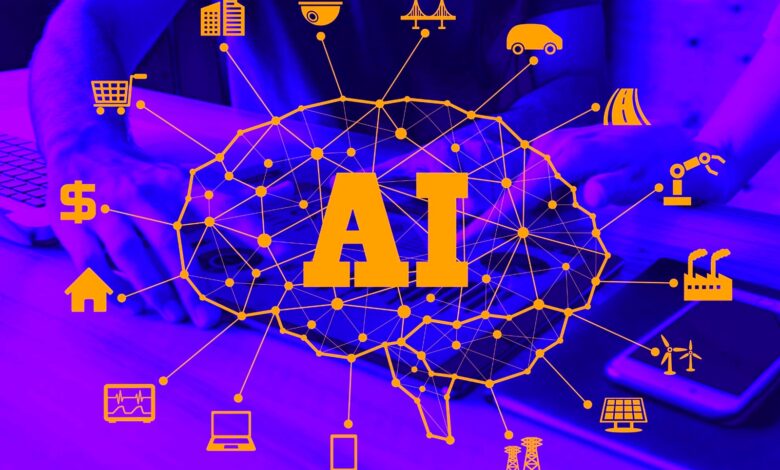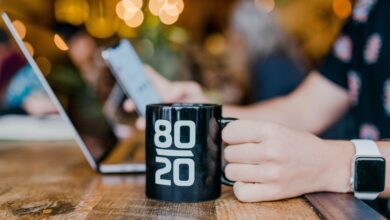AI and Influence: Two Pillars of Modern Digital Marketing Strategy
Discover best practices for influencer marketing on pinterest! Combine AI insights with authentic influence for powerful digital results.

Introduction: The New Marketing Paradigm
The digital world is constantly changing. For brands, keeping up with new ways to reach people is vital. Today, two significant trends are Artificial Intelligence (AI) and influencer marketing. When used together, they create a powerful new approach. This is especially true on visual platforms like Pinterest.
Pinterest is more than just a place for ideas. It’s where people plan their lives and find new products. This makes it a unique space for influencers to connect with highly engaged audiences. But how can brands and influencers truly shine here?
In this guide, we will share the best practices for influencer marketing on Pinterest, explore how AI can make your campaigns smarter, examine unique content types and how to measure what works, and show you how to build real trust and drive strong results.

The AI Revolution: Data-Driven Precision at Scale
Artificial Intelligence (AI) and Machine Learning (ML) are no longer futuristic concepts but integral to modern digital marketing. These technologies enable unprecedented data-driven precision, allowing brands to understand and engage with their audiences effectively. For influencer marketing on Pinterest, AI acts as a powerful backend, streamlining processes, enhancing targeting, and optimizing content for maximum impact.
Powered by AI, predictive analytics can forecast consumer behavior and identify emerging trends, giving brands a head start in content creation and campaign planning. This is particularly valuable on a platform like Pinterest, where users often plan future purchases or projects months in advance. AI can pinpoint specific customer segments by analyzing vast datasets of user interactions, search queries, and saved Pins, allowing for hyper-targeted campaigns. This level of customer segmentation ensures that influencer content reaches the most receptive audiences, increasing relevance and engagement.
Furthermore, AI facilitates content personalization at scale. Instead of generic messaging, AI can help tailor influencer content suggestions, visual styles, and calls-to-action to resonate with individual user preferences. This personalized approach fosters a stronger connection between the influencer, the brand, and the Pinner. SEO optimization, a cornerstone of Pinterest’s search-engine-like functionality, also benefits immensely from AI. AI tools can analyze keyword performance, identify optimal keyword densities for Pin descriptions and board titles, and suggest trending long-tail keywords that human marketers might overlook. This ensures that influencer content is engaging and highly findable within Pinterest’s vast visual search ecosystem.

Leveraging AI for a Smarter Digital Marketing Strategy
The application of AI in digital marketing extends beyond analytics and targeting. AI content creation tools can assist influencers and brands in generating ideas for Pin titles, descriptions, and even visual concepts, ensuring consistency and creativity. While AI might not replace human creativity, it can augment it, providing a constant stream of optimized suggestions. Chatbots and AI-powered customer service automation can handle initial inquiries stemming from influencer campaigns, providing instant responses and guiding users further down the sales funnel, enhancing the user experience and reducing response times.
AI also plays a critical role in ad campaign optimization. On Pinterest, where promoted Pins can significantly amplify influencer content, AI algorithms can continuously monitor campaign performance, adjusting bids, targeting parameters, and ad placements in real-time to maximize ROI. This dynamic optimization ensures that every dollar spent on amplifying influencer content works harder. A/B testing, a fundamental practice for refining marketing messages, can be dramatically accelerated and more sophisticated with AI. AI can quickly identify optimal combinations of visuals, copy, and calls-to-action across multiple Pin variations, leading to faster learning and improved campaign effectiveness. For specialized applications, such as developing a highly localized and technically sound Denver AI SEO strategy, leveraging AI tools provides a significant competitive edge, demanding deep technical knowledge and local market understanding to harness its power for findability and audience engagement truly.
The Role of AI in Search and Findability
Pinterest is unique in its function as a visual search engine, and AI is at the heart of its findability mechanisms. Search engine algorithms on Pinterest rely heavily on AI to interpret user queries, analyze image content, and match them with relevant Pins. This is why keyword analysis is crucial; AI understands and processes these textual cues to surface content. Influencers must ensure their Pin descriptions, board titles, and even image alt-text are rich with relevant keywords to be found by AI-driven searches.
The rise of visual search is also a testament to AI’s capabilities. Pinterest’s Lens feature, which allows users to search for products or ideas by taking photos, is powered by sophisticated image recognition AI. This means visually appealing and contextually relevant influencer content is more likely to be found. User intent analysis, another AI strength, helps Pinterest understand what users are searching for and why. Are they looking for inspiration, a tutorial, or a product to buy? AI helps tailor the search results, making Pinterest an incredibly efficient platform for users with high purchase intent. This deep understanding of user intent makes influencer content, especially shoppable Pins or Idea Pins with clear calls to action, particularly effective.

The Human Element: Building Trust Through Influence
While AI provides the analytical backbone for innovative marketing, the human element remains irreplaceable for building genuine trust and connection, particularly through influencer marketing. On Pinterest, influencers are not just content creators but curators of inspiration, problem-solvers, and trusted guides for their communities. Their authenticity and relatability are what drive engagement and ultimately, purchasing decisions.
Influencer marketing on Pinterest thrives on authenticity. Unlike other platforms where flashy personalities might dominate, Pinners seek genuine advice, inspiration, and practical solutions. This means influencers who genuinely use and believe in the products or ideas they promote resonate most strongly. Niche communities flourish on Pinterest, allowing brands to partner with micro-influencers with highly engaged, specialized audiences. These influencers might not have millions of followers, but their recommendations carry significant weight within their specific communities, leading to higher conversion rates.
User-generated content (UGC) is another powerful outcome of successful influencer campaigns. Influencers inspire their followers to create and share their content featuring a brand’s products, which amplifies reach and builds social proof. This organic endorsement is invaluable. Influencer marketing on Pinterest is about brand storytelling – not through direct sales pitches, but through aspirational, helpful, and inspiring narratives that seamlessly integrate products into users’ lives. When influencers demonstrate how a product solves a problem, improves a lifestyle, or contributes to a project, they build a narrative that traditional advertising often struggles to achieve.

Understanding the “Why” Behind Influencer Success
Pinterest’s unique user behavior provides a fertile ground for influencer success. Pinners come to the platform with a high purchase intent; they actively plan, research, and look for ideas for future projects or purchases. Statistics show that 85% of Pinners use the platform to plan new projects, and a remarkable 93% use it to plan future purchases. This “findy mindset” means users are open to new ideas and products, making them highly receptive to influencer recommendations. In fact, 97% of Pinterest searches are unbranded, indicating users seek inspiration rather than specific brand names, which is a massive opportunity for brands to be found through influencer content.
Influencers succeed by solving user problems and providing valuable, actionable content. Whether it’s a DIY tutorial, a recipe, a fashion guide, or home decor inspiration, the most successful Pins offer practical solutions or aspirational ideas that users can implement in their lives. This focus on utility creates a unique dynamic where influencers are seen as helpful resources rather than just entertainers.
The evergreen nature of Pinterest content also contributes significantly to influencer success. Unlike the fleeting lifespan of posts on other social media platforms (often just a few hours), Pins can continue driving traffic and engagement for months or even years. Research indicates that Pins can live up to 1,600 times longer than posts on other platforms. This means a well-crafted influencer Pin can generate sustained value over time, making it a highly efficient marketing asset.
Community building is another critical aspect. Pinners often engage with content by saving it to their boards, commenting, and interacting with the creator. Influencers who foster these interactions, reply to comments, and encourage saves build loyal communities around their expertise and interests.
Key metrics for measuring influencer success on Pinterest reflect this unique user behavior:
- Engagement Rate: Measures the overall interaction with Pins, including saves, clicks, and comments.
- Saves (Repins): A crucial indicator of user intent and future action, as users save content for later reference.
- Link Clicks (Outbound Clicks): Tracks how many users click through to the brand’s website or product page.
- Conversions: Direct purchases or sign-ups resulting from influencer content.
- Impressions & Monthly Views: Indicate the reach and visibility of influencer content.
Crafting an Authentic Influencer Digital Marketing Strategy
Authenticity is paramount in Pinterest influencer marketing. Brands must prioritize brand alignment, ensuring the influencer’s personal brand, values, and content style naturally complement theirs. A mismatch can quickly undermine trust and engagement. This often means looking beyond follower counts and focusing on engagement rates and audience demographics that genuinely resonate with the brand’s target market.
Long-term partnerships typically yield better results than one-off campaigns. Sustained collaboration allows influencers to genuinely integrate a brand into their content, building deeper trust with their audience and providing more consistent exposure for the brand. This will also enable influencers to create diverse content formats, showcasing products in various contexts over time.
Content quality cannot be overstated. Pinterest is a visual platform, so high-resolution, aesthetically pleasing images and videos are essential. Influencer content should be visually appealing, helpful, inspiring, and authentic. It should provide value to the Pinner through a tutorial, DIY project, or aspirational lifestyle imagery. Vertical images (2:3 aspect ratio) are highly recommended as they perform best on mobile, where 80% of Pinterest users access the platform.
The choice between micro-influencers and macro-influencers depends on campaign objectives. Micro-influencers often boast higher engagement rates and more niche, dedicated audiences, making them ideal for driving conversions and building strong community ties. Macro-influencers, with their broader reach, are effective for brand awareness campaigns. A balanced strategy might involve a mix of both.
Disclosure and transparency are non-negotiable. Influencers must clearly disclose sponsored content using Pinterest’s paid partnership tool. This not only complies with regulations but also maintains audience trust. Pinners appreciate honesty, and transparent disclosures build credibility rather than detract from it. To effectively identify and manage these partnerships, many brands are turning to AI-driven influencer marketing practices. These practices can streamline the finding of partners who align with brand values and campaign objectives, ensuring data-backed decisions in building authentic relationships.
Synergy: Integrating AI and Influence for Maximum Impact
The true power of modern digital marketing on Pinterest lies in the seamless integration of AI and influencer marketing. This synergy creates a feedback loop where AI improves influencer strategies, and influencer-generated content provides valuable data for AI to learn and optimize further. It’s a human-machine partnership that drives unparalleled results.
AI-powered influencer findy tools can analyze vast databases of creators, matching brands with influencers whose audience demographics, content style, engagement patterns, and even sentiment align perfectly with campaign goals. This moves beyond simple follower counts to a nuanced understanding of actual influence. Once partnerships are established, AI tools can continuously monitor performance tracking, providing real-time insights into Pin impressions, saves, clicks, and conversions.
ROI measurement becomes more precise with AI. By attributing conversions to specific influencer Pins and campaigns, brands can accurately assess the financial return on their influencer investments. AI can also conduct sentiment analysis on comments and reactions to influencer content, providing qualitative insights into audience perception and brand reputation. Finally, AI plays a crucial role in content amplification, ensuring that high-performing influencer Pins reach an even broader, yet still relevant, audience through paid promotions.
Here’s a comparison of manual versus AI-driven influencer campaign management:
Feature Manual Campaign Management AI-Driven Campaign Management Influencer Findy Time-consuming manual search, limited by human capacity, often relies on subjective assessment. Rapid, data-driven matching based on audience, content, and performance metrics. Vetting & Selection Manual review of profiles, engagement, and brand fit, prone to human bias. AI sentiment analysis, fraud detection, and predictive performance scoring. Content Optimization: Intuitive decisions and A/B testing can be slow and limited. AI suggests optimal keywords, visuals, and CTAs; rapid A/B testing. Performance Tracking Manual: data collection, retrospective analysis, and limited real-time insights. Real-time dashboards, automated reporting, and granular metric analysis. ROI Measurement often relies on last-click attribution and is challenging to track assisted conversions. Advanced attribution models, comprehensive conversion tracking, and long-term impact analysis. Content Amplification Manual setup of promoted Pins, limited dynamic optimization. AI-driven ad optimization, automated bidding, and dynamic audience segmentation. Scalability is limited by human resources, making it difficult to manage many influencers simultaneously. Highly scalable, can manage hundreds or thousands of influencers and Pins efficiently.
Using AI to Amplify Influencer Content
Once compelling influencer content is created, AI can ensure it reaches its full potential through strategic amplification. Promoted Pins are a powerful way to boost the visibility of top-performing influencer content beyond their organic reach. AI algorithms can optimize these promoted Pins by targeting lookalike audiences—users who share characteristics with an influencer’s existing engaged followers—or by retargeting users who have previously interacted with the brand or influencer content. This ensures that the amplification budget is spent on highly receptive audiences.
Paid social ads on Pinterest, managed with AI, can also leverage influencer content to drive specific campaign objectives, whether brand awareness, website traffic, or direct conversions. AI can predict which creative elements (visuals, copy, CTAs) are most likely to perform well for different audience segments, continuously adjusting and refining ad sets for optimal results. This proactive optimization leads to significant improvements in ad spend efficiency.
Furthermore, AI can help predict content performance before a campaign even launches, allowing brands to invest in amplifying the most promising influencer Pins. This predictive capability minimizes risk and maximizes the impact of amplification efforts, ensuring that the most engaging and conversion-driving content gets the broadest possible distribution. The result is increased visibility and a higher likelihood of driving tangible business outcomes, such as increased sales and customer acquisition.
Creating Content for Both Algorithms and People
The challenge in modern digital marketing is to create content that satisfies both the intricate demands of AI algorithms and the nuanced preferences of human audiences. On Pinterest, this means crafting findable, engaging, and inspiring Pins.
SEO-optimized descriptions are crucial for algorithms. Every Pin, board, and profile description should naturally incorporate relevant keywords that Pinners are searching for. The Pinterest Trends tool is invaluable for identifying these keywords and understanding seasonal search patterns. Influencers should be trained to use these keywords effectively, not just for visibility but also to communicate the value of their content clearly.
Visually appealing content is non-negotiable for people. High-quality images and videos, straightforward typography, and a consistent aesthetic are essential. Vertical video, particularly in the form of Idea Pins, is highly favored by Pinterest’s algorithm and users. Idea Pins, which are multi-page video and image formats, allow for richer storytelling and tutorials, making them incredibly engaging. Video views on Pinterest have grown to one billion daily, highlighting the importance of this format. Short, engaging videos (6-15 seconds for ads) are particularly effective at capturing attention.
Shoppable content directly addresses the high purchase intent of Pinners. Influencers should use features like product tagging, which allows users to click directly on items within a Pin to learn more or make a purchase. Brands can also set up a shop on Pinterest, making the path to purchase seamless.
Finally, clear calls to action (CTAs) guide users on the next steps. Whether it’s “Shop Now,” “Learn More,” “Save for Later,” or “Try This Recipe,” a concise and compelling CTA transforms inspiration into action. By thoughtfully combining these elements, influencer content on Pinterest can effectively capture algorithmic attention and human engagement, leading to powerful results.
Frequently Asked Questions about AI and Influencer Marketing
How do I measure the ROI of an influencer campaign that AI amplifies?
Measuring ROI for AI-amplified influencer campaigns requires a multi-faceted approach, moving beyond simple last-click attribution. We focus on a combination of metrics that reflect both immediate and long-term impact. Directly, we track conversions through unique tracking links, coupon codes, or landing pages assigned to each influencer. AI tools can then aggregate and analyze this data, providing a granular view of direct sales or lead generation.
Beyond direct conversions, AI assists in measuring brand lift, sentiment analysis, and audience growth. AI can monitor social listening data to gauge changes in brand perception and mentions before, during, and after a campaign. For long-term value, we look at how influencer content contributes to audience growth on Pinterest (new followers, saves), increased website traffic, and the repurposing potential of high-performing content. AI helps identify which pieces of content have the most extended evergreen life and continue to drive engagement, contributing to sustained ROI over time.
Can small businesses use AI in their marketing strategy?
Absolutely. AI is not exclusively for large corporations. Many scalable AI tools are now available, often with freemium models or affordable subscription tiers, making them accessible to small businesses. For Pinterest influencer marketing, small businesses can start by leveraging AI-powered analytics built into Pinterest Business Accounts to understand their audience and content performance. They can use AI writing assistants to generate Pin titles, descriptions, and content ideas, saving time and improving SEO. Furthermore, AI tools can help with basic customer segmentation and trend identification, allowing small businesses to create more targeted and relevant influencer campaigns without needing a massive data science team. The key is to start small, identify specific pain points AI can solve, and gradually integrate more sophisticated tools as needs and budgets grow.
How do you ensure authenticity when using AI to find influencers?
AI is a powerful tool for influencer finding and data analysis, but it improves, not replaces, human judgment. To ensure authenticity, the final vetting process must always be human-led. AI can efficiently filter through millions of profiles to identify influencers whose demographics, interests, and past content align with brand values. However, a human team then reviews these candidates to assess their genuine voice, engagement quality, and cultural fit.
We prioritize influencers with an authentic connection with their audience, demonstrated through consistent engagement, genuine comments, and a history of creating valuable content. Focusing on content quality and audience engagement metrics (like saves and comments) over vanity metrics (like follower count) is crucial. Furthermore, building long-term relationships with influencers fosters deeper trust and allows for more organic, authentic collaborations, rather than one-off sponsored posts that might feel forced. AI helps us find the right partners efficiently, but the human touch ensures the partnership is authentic and resonates with the audience.
Conclusion: The Future is a Human-Machine Partnership
Two formidable forces—AI and influencer marketing—undeniably shape the landscape of digital marketing. As we’ve explored, on a dynamic platform like Pinterest, their combined power creates an unparalleled opportunity for brands to connect with audiences, drive discovery, and inspire action.
AI brings data-driven precision, offering sophisticated tools for audience segmentation, content optimization, and performance tracking. It allows us to understand “what works” with unprecedented clarity and to amplify successful campaigns with remarkable efficiency. Meanwhile, influencer marketing injects the essential human element—authenticity, trust, and relatable storytelling—that resonates deeply with Pinners actively seeking inspiration and solutions.
The future of digital marketing is not about choosing between AI and human influence; it’s about fostering a powerful human-machine partnership. It’s about leveraging AI to make smarter, faster, and more scalable decisions, while empowering influencers to create genuine, impactful content that builds lasting connections. This hybrid strategy, blending the best of data and creativity, is the key to opening up sustained success in the changing digital field.












